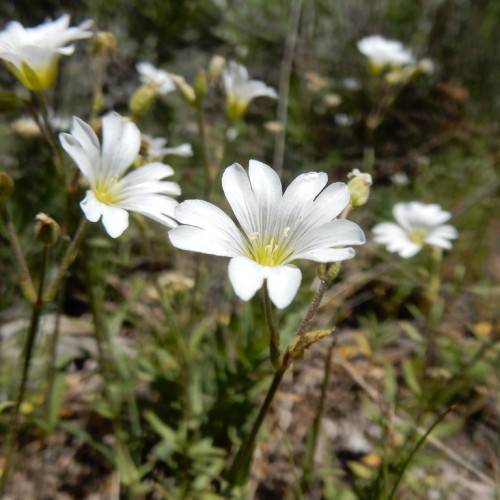
Field Chickweed
Cerastium arvense subsp. arvense
Watering:
Minimal
Hardiness Zone:
Sun:
full sun,part shade
Leaf:
Yes
Growth Rate:
Low
Salt Tolerant:
Yes
Care Level:
Medium
watering
Alpine chickweed should be watered on a regular basis. It prefers moderate-to-heavy irrigation. In the summer, water the plant deeply 2 to 3 times each week. During the winter, water once or twice a week. Make sure the soil is allowed to dry out a bit between watering, and water when the top 1-2 inches of the soil feels dry. Avoid over-watering, as this can lead to root rot.
sunlight
Alpine Chickweed, Cerastium alpinum subsp. alpinum, is a cool-climate plant species that thrives in partial shade and does best with a few hours of direct sunlight per day. During the summer, the best time for Alpine Chickweed to receive sunlight is during the early morning and late afternoon when the sun is less intense. In the winter, when days are shorter, the best time for the plant to receive sunlight is when the sun is at its highest point in the sky, usually between 11 am and 3 pm. In both cases, it is important for the plant to be sheltered from the harsher midday sun to prevent heat and light stress.
pruning
For Alpine Chickweed (Cerastium alpinum subsp. alpinum), pruning should be done sparingly in order to ensure optimal growth. Prune only when necessary, such as when dead or damaged stems are present. Pruning this plant should happen in late fall or early winter when the plant is dormant. Begin pruning the outer branches and move inward as needed. Cut away miscellaneous stems as desired and remove any branches that intersect with each other. Lastly, cut away any dead or damaged stems with sharp shears. Doing so helps promote healthy regrowth and healthy flowering in the springtime.
